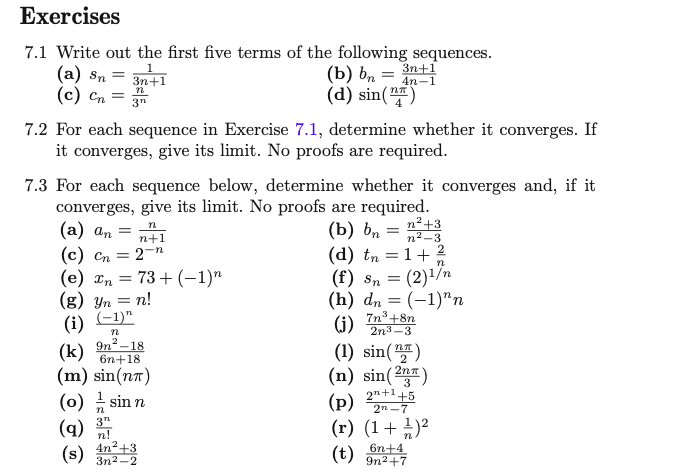Lecture 2
Last time we recalled what is $\N$, $\Z$ and $\Q$. I hope you had realized that I did not cover much in class, and you do need to read the textbook (Ross) to learn the details. In particular, you want to work on exercises on induction, read and apply the rational zero theorem (to show that $\sqrt{2}$ is not a rational number). We also mentioned the word 'ring' and 'field', which are algebraic concepts, which you can read in Harrison's note.
Today we are going to introduce the real numbers. We are not going to construct real number from rational number. There are two ways to construct, the quickest way is 'Dedekind Cut' (you can find in Rui's note); the slower but conceptually more natural way is to 'take completion of the metric space $\Q$', which is the approach adopted by Tao-I. I am going to follow Ross, and assume the existence of real number, and state its property. One of the most important property that $\R$ have, where $\Q$ does not, is the 'existence of sup' (no, not whatsup, just sup, short for supremum). Then we prove the 'archaemedian property'. This is in Ross Sec.4
Now, you may feel all the properties in Sec 4 are too trivial. Why we spend time to prove easy properties for a familiar guy, like $\R$? Well, imagine the 'curtain of ignorance' has fallen down, and you are just given an 'ordered field with the completeness axiom', call it $F$, but you don't know yet if $F = \R$. Can you still prove the Archaemedian property? This is the axiom based approach, versus the construction based approach, it basically says, 'I don't care how you construct this field, as long as it satisfies these axioms, then it must has the following properties'.
Now, back to the proof. Can you try to prove Archaemedian property without reading the proof? Another cool statement is the denseness of $\Q$, namely, between any two real numbers, you can find a rational number. See again, if you can find a proof for that without reading the proof.
Next, we briefly mention what the symbol $+\infty$ and $-\infty$ mean. Note that, these are not real numbers, they are not member of $\R$. We introduce them to simplify certain statement of results. For example, we can now say, given any subset $E \In \R$, the $\sup(E)$ exists in $\R \cup \{+\infty\}$. (What's wrong with this expression $\R \cup +\infty$? Why the curly braces? )
That hopefully will take us 40 min. We will use the last 20 min to talk about sequence and limits in $\R$, this is Ross Sec 7 and Tao-I Ch 6. So, what does limit mean? We say a sequence (of real numbers) $(a_n)$ converges to $a$, if for any $\epsilon>0$, there exists $N>0$, such that for any $n > N$, we have $|a_n - a| < \epsilon$. Informally, we say, for any $\epsilon$, the sequence eventually fell into the $\epsilon$-neighborhood of $a$.
Let's finish by go through some examples of convergence, just to test how the definition works.
The note from previous semester might be useful.


